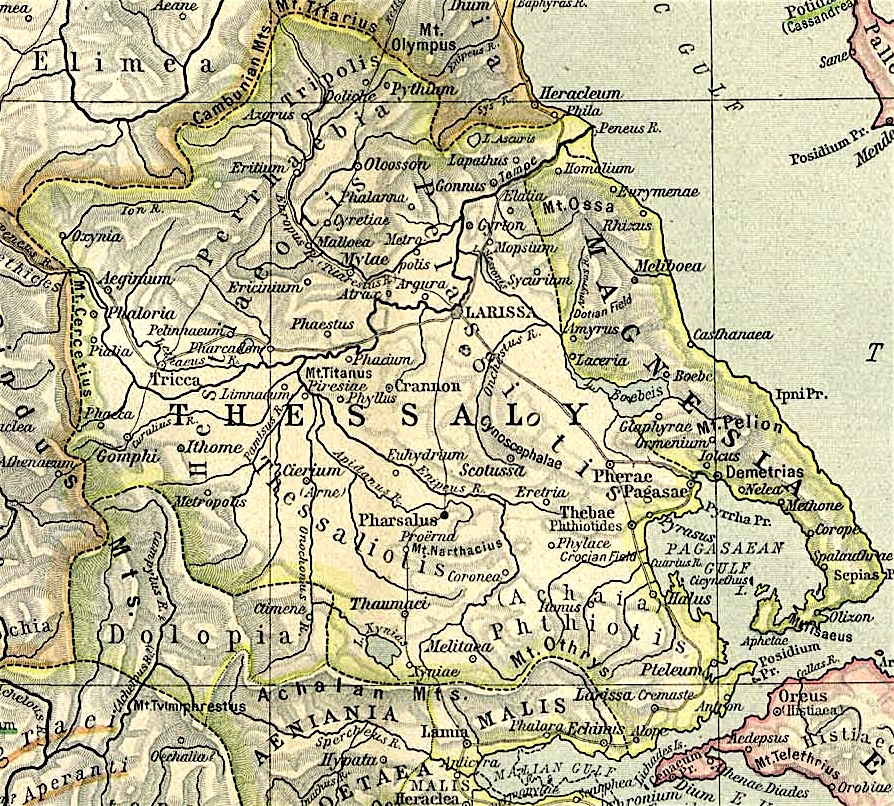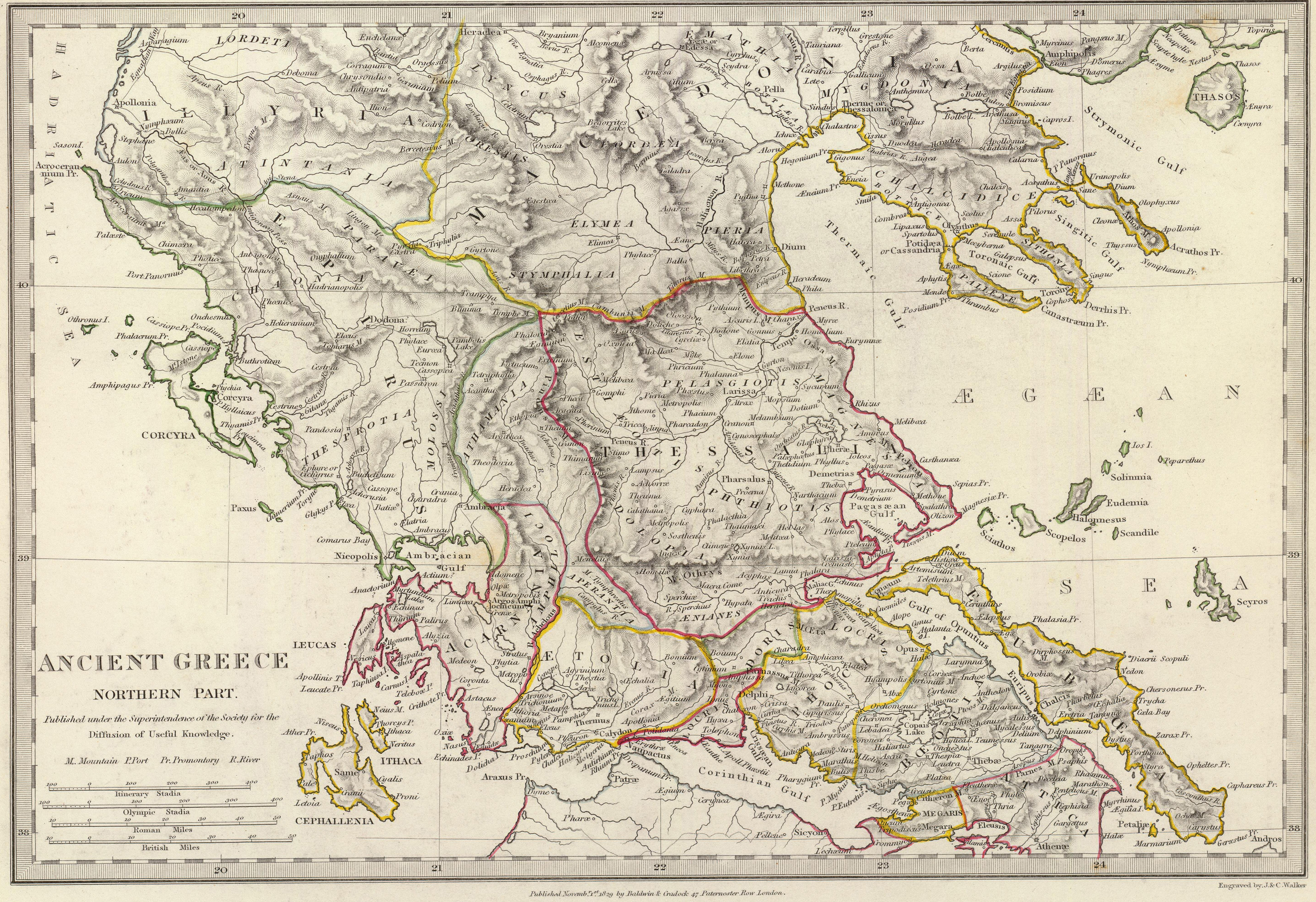|
Perrhaebia
Perrhaebia ( el, Περραιβία) was the northernmost district of ancient Thessaly, where the tribe of the Perrhaebi lived. Major cities were: Pythion, Doliche, Azorus, Oloosson and Phalanna Phalanna ( grc, Φάλαννα), was a town and polis (city-state) of the Perrhaebi in ancient Thessaly, situated on the left bank of the Peneius, southwest of Gonnus. Strabo says that the Homeric Orthe became the acropolis of Phalanna; but in ... the capital. Perrhaebia was part of Macedonia between the 4th and 1st centuries BC. References *In the shadow of Olympus By Eugene N. Borza Page 164 Historical regions in Greece Ancient Macedonia {{AncientThessaly-geo-stub ... [...More Info...] [...Related Items...] OR: [Wikipedia] [Google] [Baidu] |
Azorus
Azorus or Azoros ( grc, Ἄζωρος or Ἀζώριον) was a town and polis (city-state) in Perrhaebia in ancient Thessaly situated at the foot of Mount Olympus. Azorus, with the two neighbouring towns of Pythium and Doliche, formed a Tripolis. During the Roman–Seleucid War, the Tripolis was ravaged by an army of the Aetolian League in the year 191 BCE. During the Third Macedonian War the three towns surrendered to the army of Perseus of Macedon in the year 171 BCE, but that same year the Romans reconquered the three. In the year 169 BCE troops arrived from the Roman consul Quintus Marcius Philippus who camped between Azorus and Doliche. The three cities minted a common coin with the inscription "ΤΡΙΠΟΛΙΤΑΝ". The site of Azorus is the ''palaiokastro'' (old fort) at the modern village of Azoros Azoros ( el, Άζωρος, ) is a village and a community of the Elassona municipality in the Larissa regional unit. [...More Info...] [...Related Items...] OR: [Wikipedia] [Google] [Baidu] |
Oloosson
Oloosson ( grc, Ὀλοοσσών) was a town and polis (city-state) of Perrhaebia in ancient Thessaly near Elone and Gonnus, mentioned in the Catalogue of Ships in the ''Iliad'' by Homer, who gives to it the epithet of “white,” from its white argillaceous soil. In Procopius the name occurs in the corrupt form of Lossonus. Several Greek inscriptions have been found concerning the city of Oloosson. In a votive inscription from the first half of the fourth century BCE that is dedicated to Apollo Pythius are also the names of some people together with various demonyms from Perrhaebia. In another inscription dated in the 1st century BCE, election procedures of magistrates are mentioned. Ancient Oloosson was located at a site called Panayia in the modern town of Elassona Elassona ( el, Ελασσόνα; Katharevousa: gr, Ἐλασσών, Elasson) is a town and a municipality in the Larissa regional unit in Greece. During antiquity Elassona was called Oloosson (� ... [...More Info...] [...Related Items...] OR: [Wikipedia] [Google] [Baidu] |
Perrhaebia
Perrhaebia ( el, Περραιβία) was the northernmost district of ancient Thessaly, where the tribe of the Perrhaebi lived. Major cities were: Pythion, Doliche, Azorus, Oloosson and Phalanna Phalanna ( grc, Φάλαννα), was a town and polis (city-state) of the Perrhaebi in ancient Thessaly, situated on the left bank of the Peneius, southwest of Gonnus. Strabo says that the Homeric Orthe became the acropolis of Phalanna; but in ... the capital. Perrhaebia was part of Macedonia between the 4th and 1st centuries BC. References *In the shadow of Olympus By Eugene N. Borza Page 164 Historical regions in Greece Ancient Macedonia {{AncientThessaly-geo-stub ... [...More Info...] [...Related Items...] OR: [Wikipedia] [Google] [Baidu] |
Perrhaebi
The Perrhaebi () were an ancient Greek people who lived on the western slopes of Olympus, on the border between Thessaly and Macedonia. They took part in the Trojan War under Guneus and also fought in the Battle of Thermopylae. History Still independent at the time of the ''Iliad'', they were tributary ''períoikoi'' to the neighbouring Thessali in the 5th century BC, with a special dependence upon the city of Larisa. They could, however, enjoy some degree of autonomy whenever the Thessalian League was weaker, and they had retained from their independence two votes in the Delphic Amphictyonic League (''Amphiktyonía''), until Philip II of Macedon took one vote from them. They were part of the Macedonian Kingdom until the Roman conquest by Titus Quinctius Flamininus in 196 BC. They were listed in Xerxes' vast army by Herodotus. A coin of the Perrhaebi depicted a man restraining a bull on one side and a horse on the other. The inscription was "Περραιβών".Handboo ... [...More Info...] [...Related Items...] OR: [Wikipedia] [Google] [Baidu] |
Pythion
Pythion ( el, Πύθιον) or Pythium, also Pythoion (Πύθοιον) was a city and polis (city-state) of Perrhaebia in ancient Thessaly, situated at the foot of Mount Olympus, and forming a Tripolis (region of Thessaly), Tripolis with the two neighbouring towns of Azorus and Doliche (Thessaly), Doliche. Pythion derived its name from a temple of Apollo, Apollo Pythius situated on one of the summits of Olympus, as we learn from an epigram of Xeinagoras, a Ancient Greece, Greek mathematician, who measured the height of Olympus from these parts. Games were also celebrated here in honour of Apollo. Geography Pythion commanded an important pass across Mount Olympus. This pass and that of Vale of Tempe, Tempe are the only two leading from Macedonia into the northeast of Thessaly. History During the reign of Amyntas III or Philip II of Macedon, Philip II, the Tripolis was annexed to Macedon. According to Theagenes (historian), Theagenes the inhabitants of Balla (Pieria), Balla were re ... [...More Info...] [...Related Items...] OR: [Wikipedia] [Google] [Baidu] |
Doliche (Thessaly)
Doliche ( el, Δολίχη) was an ancient Greek city and polis (city-state) in Perrhaebia in Thessaly, situated at the foot of Mount Olympus. Doliche, with the two neighbouring towns of Azorus and Pythion (Pythium), formed a Tripolis. During the Roman–Seleucid War, the Tripolis was ravaged by an army of the Aetolian League in the year 191 BCE. During the Third Macedonian War the three towns surrendered to the army of Perseus of Macedon in the year 171 BCE, but that same year the Romans reconquered the three. In the year 169 BCE troops arrived from the Roman consul Quintus Marcius Philippus who camped between Azorus and Doliche. The three cities minted a common coin with the inscription "ΤΡΙΠΟΛΙΤΑΝ". The site is occupied by the modern town of Dolichi; when William Martin Leake visited the site in the 19th century, he found two fragments of Doric columns in diameter in a ruined church, and a sepulchral stone in the burying-ground, together with som ... [...More Info...] [...Related Items...] OR: [Wikipedia] [Google] [Baidu] |
Ancient Phalanna
Phalanna ( grc, Φάλαννα), was a town and polis (city-state) of the Perrhaebi in ancient Thessaly, situated on the left bank of the Peneius, southwest of Gonnus. Strabo says that the Homeric Orthe became the acropolis of Phalanna; but in the lists of Pliny Orthe and Phalanna occur as two distinct towns. Phalanna was said to have derived its name from a daughter of Tyro. It was written Phalannus in Ephorus, and was called Hippia by Hecataeus of Miletus. Phalanna is mentioned by Livy as near Mylae and Gyrton during the Third Macedonian War between the Romans and Perseus of Macedon in 171 BCE. The site of Phalanna is in the modern community of Damasi (Δαμάσι) near the village of Damasouli Damasouli ( el, Δαμασούλι, ) is a village in the municipality of Tyrnavos. Before the 1997 local government reform it was a part of the community of Damasi. The 2011 census recorded 64 inhabitants in the village. Population According to ... (Δαμασούλι ... [...More Info...] [...Related Items...] OR: [Wikipedia] [Google] [Baidu] |
Thessaly
Thessaly ( el, Θεσσαλία, translit=Thessalía, ; ancient Thessalian: , ) is a traditional geographic and modern administrative region of Greece, comprising most of the ancient region of the same name. Before the Greek Dark Ages, Thessaly was known as Aeolia (, ), and appears thus in Homer's '' Odyssey''. Thessaly became part of the modern Greek state in 1881, after four and a half centuries of Ottoman rule. Since 1987 it has formed one of the country's 13 regions and is further (since the Kallikratis reform of 2011) sub-divided into five regional units and 25 municipalities. The capital of the region is Larissa. Thessaly lies in northern Greece and borders the regions of Macedonia on the north, Epirus on the west, Central Greece on the south, and the Aegean Sea on the east. The Thessaly region also includes the Sporades islands. Name and etymology Thessaly is named after the ''Thessaloi'', an ancient Greek tribe. The meaning of the name of this tribe is ... [...More Info...] [...Related Items...] OR: [Wikipedia] [Google] [Baidu] |
Macedon
Macedonia (; grc-gre, Μακεδονία), also called Macedon (), was an ancient kingdom on the periphery of Archaic and Classical Greece, and later the dominant state of Hellenistic Greece. The kingdom was founded and initially ruled by the royal Argead dynasty, which was followed by the Antipatrid and Antigonid dynasties. Home to the ancient Macedonians, the earliest kingdom was centered on the northeastern part of the Greek peninsula,. and bordered by Epirus to the west, Paeonia to the north, Thrace to the east and Thessaly to the south. Before the 4th century BC, Macedonia was a small kingdom outside of the area dominated by the great city-states of Athens, Sparta and Thebes, and briefly subordinate to Achaemenid Persia. During the reign of the Argead king PhilipII (359–336 BC), Macedonia subdued mainland Greece and the Thracian Odrysian kingdom through conquest and diplomacy. With a reformed army containing phalanxes wielding the '' sarissa'' pi ... [...More Info...] [...Related Items...] OR: [Wikipedia] [Google] [Baidu] |
Historical Regions In Greece
History (derived ) is the systematic study and the documentation of the human activity. The time period of event before the invention of writing systems is considered prehistory. "History" is an umbrella term comprising past events as well as the memory, discovery, collection, organization, presentation, and interpretation of these events. Historians seek knowledge of the past using historical sources such as written documents, oral accounts, art and material artifacts, and ecological markers. History is not complete and still has debatable mysteries. History is also an academic discipline which uses narrative to describe, examine, question, and analyze past events, and investigate their patterns of cause and effect. Historians often debate which narrative best explains an event, as well as the significance of different causes and effects. Historians also debate the nature of history as an end in itself, as well as its usefulness to give perspective on the problems of the ... [...More Info...] [...Related Items...] OR: [Wikipedia] [Google] [Baidu] |



.jpg)